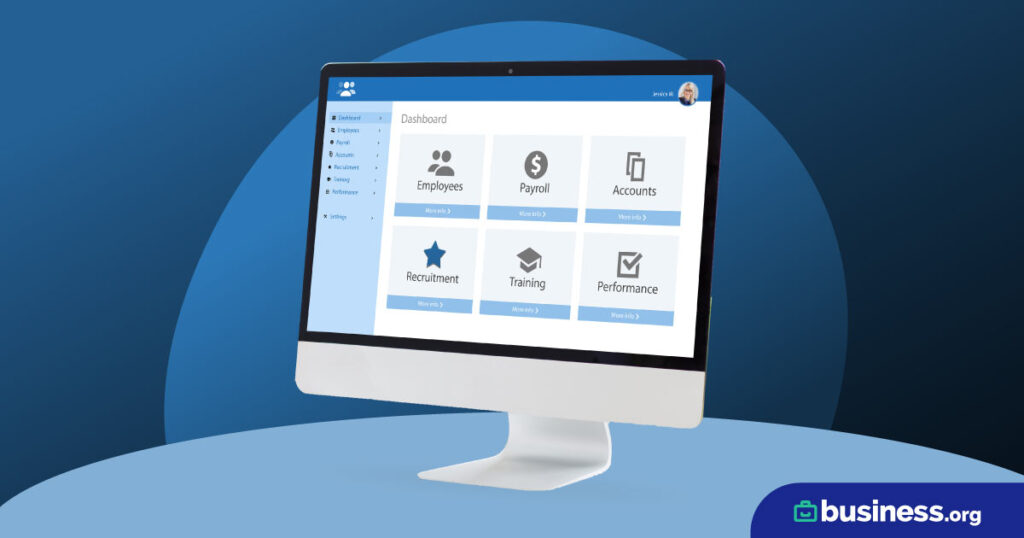We are committed to sharing unbiased reviews. Some of the links on our site are from our partners who compensate us. Read our editorial guidelines and advertising disclosure.
What Does Per Diem Mean and How Can You Use It to Manage Employee Travel Expenses?
You’ve probably heard the term "per diem" in reference to employee travel expenses. But what does per diem mean anyway, and how does it apply to your business?
A per diem is a daily allowance paid to employees to cover the cost of travel while they’re away on business trips.
Understanding how per diems work is important for managing your company’s travel costs and ensuring you’re in compliance with tax and labor laws.
We'll dive into what per diem means, how per diems work, the federal rates and what per diem payments cover.
Let’s get started.
By signing up I agree to the Terms of Use and Privacy Policy.
What does per diem mean?
Per diem, which means "per day" in Latin, is a payment made to employees to cover their out-of-pocket expenses while traveling for work.
This daily allowance can cover business travel expenses like meals, lodging and incidental costs.
Per diem payments are tax-free for the employee if the payment is equal to or less than the federal per diem rate. However, any amount over the federal rate is considered taxable income.
Companies usually reimburse employees electronically or by check for a per diem. Payments are issued separately from wages.
You can also use a travel business credit card to pay per diem expenses, which can simplify the process. Business credit cards offer other benefits as well — such as rewards points and cash back — which can be used to offset the cost of business travel expenses.
What does per diem cover?
Per diem payments cover travel costs including lodging, meals and incidental expenses. This amount is based on the location where the employee is traveling and the length of their stay.
It's important to note that per diem payments do not cover business travel expenses such as airfare, rental cars or gas. These costs are typically reimbursed separately.
Employees who receive per diem payments aren’t typically required to submit expense receipts (except for lodging).
However, according to the Internal Revenue Service, employees need to submit a business expense report to you within 60 days of the trip.
The report must include:
- The business purpose of the trip
- The date and place of the trip
- Receipts for lodging
As a business owner, you should keep a copy of this expense report for your records.
Using small business accounting software, such as Freshbooks or NetSuite, can also help simplify the per diem process by automating calculations, keeping accurate records and providing real-time reporting.
Top accounting software for small businesses
Data as of 5/3/23. Offers and availability may vary by location and are subject to change.
*Only available for businesses with an annual revenue beneath $50K USD
**Current offer: 50% off for 3 mos. or 30-day free trial
†Current offer: 50% off for three months or 30-day free trial
‡Current offer: 75% off for 3 mos. Available for new customers only
Per diem pros and cons
As a small business owner, using a per diem to reimburse your employees can have both advantages and disadvantages.
Here are some to consider.
Pros
There are several benefits to using per diem for travel expenses.
- Simplifies expense reporting: Instead of submitting receipts for every meal and incidental expense, employees receive a fixed amount for each day they’re traveling.
- Saves time: Employees don't have to spend time submitting receipts, and your small business doesn't need to review and approve each expense.
- Predictability: Fixed per diem rates make it easier to budget for your employee’s business travel costs because you know exactly how much you need to pay for each day of travel.
Cons
Using a per diem has its perks, but it may not be the best fit for every company. Here are some downsides to consider.
- Can be inflexible: Because per diem is a fixed amount, it may not be enough to fully cover travel costs. This could lead to additional out-of-pocket expenses for employees.
- Less accurate: Employees aren’t required to submit receipts for meals, which means business owners have no way to verify how money was spent. This could make it difficult to identify fraudulent expenses.
Other definitions of per diem
Per diem isn’t just about business expenses. Per diem can also refer to daily compensation received by some workers.
A per diem employee is hired on an as-needed basis, usually to fill in for regular full-time employees.
Per diem work is common in industries that require staffing flexibility, such as health care, education and construction.
For example, a hospital may hire per diem nurses to fill in for regular nurses who are out sick or on vacation.
Per diem employees typically work on an intermittent basis, with no guaranteed minimum hours per week. Their schedules vary from week to week or even from day to day, depending on the employer.
Employment rules, like overtime pay and minimum wage requirements, still apply for per diem employees.

With unlimited payroll runs and automatic tax filing, Gusto helps small-business owners worry less about payroll and put more time into growing their business.
- Get automatic payroll tax filing, including end-of-year tax forms
- Manage workers compensation insurance
- Track paid time off, sick leave, and holiday pay
Per diem frequently asked questions (FAQ)
Yes, most of the per diem you pay your employers is tax deductible. Lodging expenses are 100% tax deductible if they’re at or below the federal rate. Restaurant meals are 50% tax deductible.
Per diem payments aren’t included as part of employee wages if the payment is equal to or less than the federal per diem rate and you receive an expense report from the employee.
In short, simplicity. Companies use per diem because it simplifies the expense reporting process, reduces errors and fraudulent claims, and makes it easier to budget for company travel expenses.
However, per diem may not always be the best option for every company or situation. Reimbursement for actual expenses is when the employee submits receipts for their costs, and the company reimburses them for the actual amount spent.
Some companies may prefer to reimburse actual expenses if their employees are expected to wine and dine clients or travel to expensive destinations.
Per diem work essentially means working on-call. Per diem jobs can last one day or several days, and per diem workers are usually paid a daily rate instead of hourly or salary.
Per diem work offers benefits for both employees and employers.
Per diem workers can enjoy a flexible work schedule by picking up shifts as needed. The pay may also be higher, especially for travel nurses.
For employers, this work provides flexibility with labor costs and scheduling when filling temporary or last-minute positions.
Per diem work is common among substitute teachers, construction workers and nurses.
Rachel Christian is a Certified Educator in Personal Finance and a senior writer at The Penny Hoarder. She focuses on small businesses, retirement, investing and taxes.
Related reading







